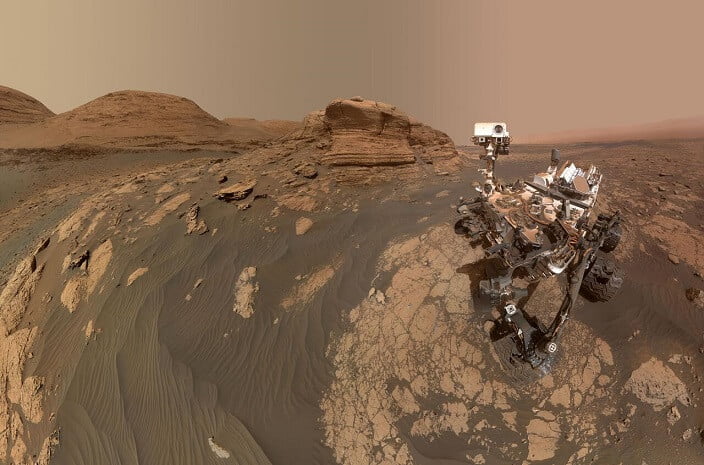By Tyler Durden | Zero Hedge
NASA touted a new study published this week in the Proceedings of the National Academy of Sciences journal that says sediment samples found by Curiosity suggest “unusual carbon signals” that may support one working theory of the possible existence of ancient life.
“We’re finding things on Mars that are tantalizingly interesting, but we would really need more evidence to say we’ve identified life,” said Paul Mahaffy, who served as the principal investigator of the Sample Analysis at Mars chemistry lab aboard Curiosity until retiring from NASA’s Goddard Space Flight Centre in Greenbelt, Maryland, in December.
“So we’re looking at what else could have caused the carbon signature we’re seeing, if not life,” Mahaffy said.
Curiosity landed in Gale Crater on Mars in August 2012 and explored a large hole that likely once held a lake. The crater has exposed ancient rock that the rover has been able to drill into and analyse with an on-board laboratory and beam data back to Earth for scientists to study.
Some sediment samples were depleted in carbon, while others were highly enriched. Carbon has two stable isotopes, either carbon 12 or 13.
Researchers found half of the samples collected by Curiosity over the decade contained carbon 12. Back on Earth, carbon 12 is used by organisms for metabolic processes and can be interpreted as a possible sign of ancient life.
However, carbon cycles on Mars aren’t entirely understood to make that assumption, researchers said.
“On Earth, processes that would produce the carbon signal we’re detecting on Mars are biological,” Christopher H. House, lead study author and professor of geosciences at Pennsylvania State University said. “We have to understand whether the same explanation works for Mars, or if there are other explanations, because Mars is very different.”
Researchers developed three scenarios to explain the carbon 12 findings.
“Three possible explanations are the photolysis of biological methane released from the subsurface, photo-reduction of atmospheric CO2, and deposition of cosmic dust during passage through a galactic molecular cloud. All three of these scenarios are unconventional, unlike processes common on Earth.”
The rover is set to collect more sediment samples next month and will give researchers another shot to analyse sediment.
“This research accomplished a long-standing goal for Mars exploration,” House said. “To measure different carbon isotopes — one of the most important geology tools — from sediment on another habitable world, and it does so by looking at nine years of exploration.”
If the samples collected are signs of ancient life on Mars. This is good news for Elon Musk, who is trying to build space ships to shuttle thousands of people between Earth and Mars to colonize the planet in the coming decades
This article (NASA’s Curiosity Rover Finds ‘Tantalizing’ Carbon Signs Of Possible Ancient Life On Mars) was originally published on Zero Hedge and is published under a Creative Commons license.

